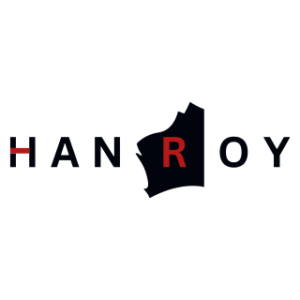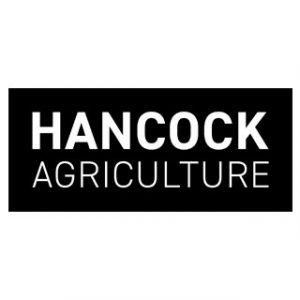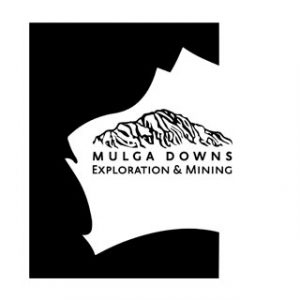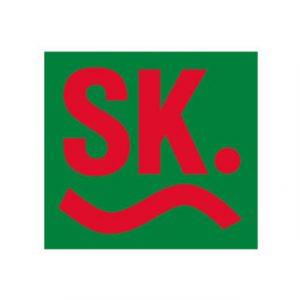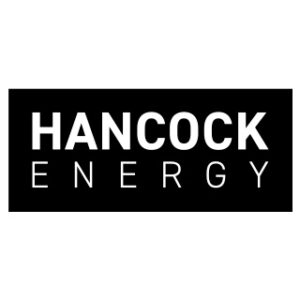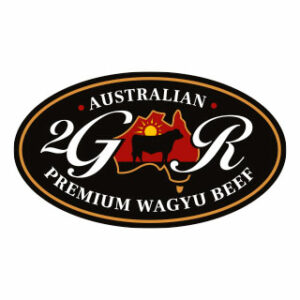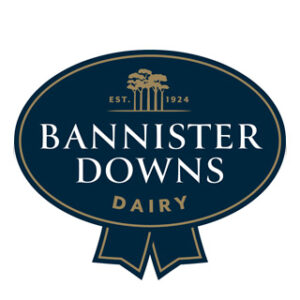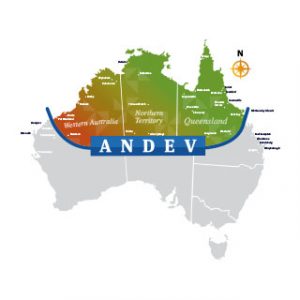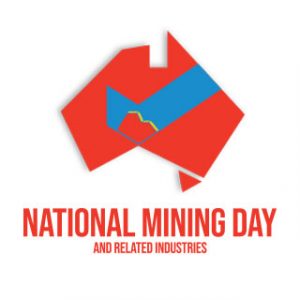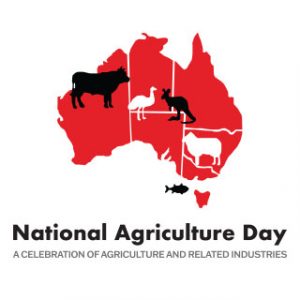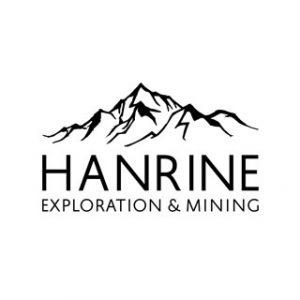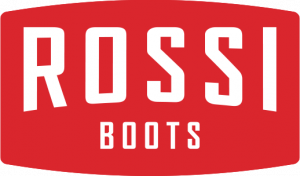Mining and
Indigenous engagement
Traditional Owner
Hancock Prospecting has strong collaborative relationships with Traditional Owner groups across our current iron ore operations, as well as proposed operational areas. We are proud of these relationships and meet both formally and informally.
Of our current operations, we have existing agreements with the Kariyarra, Palyku, Nyiyaparli, Ngarla, and Nyamal People, and are working closely with other groups including the Banjima and Yindjibarndi People in regard to future activity. Over the last seven years alone, Hancock has contributed well in excess of $300 million in royalties to these communities, as well as other significant investments in health, education, arts and culture.
We are proud to be West Australian owned and operated and we take a leadership role in working with Traditional Owners, communities and regulators to ensure we achieve best in class outcomes in fulfilling our license to operate on native title land. We take our responsibility seriously in the management of the environment and preservation of culture and heritage, all of which must be reviewed through a rigorous approval process before development of new projects, and ultimately mining operations, can be undertaken.
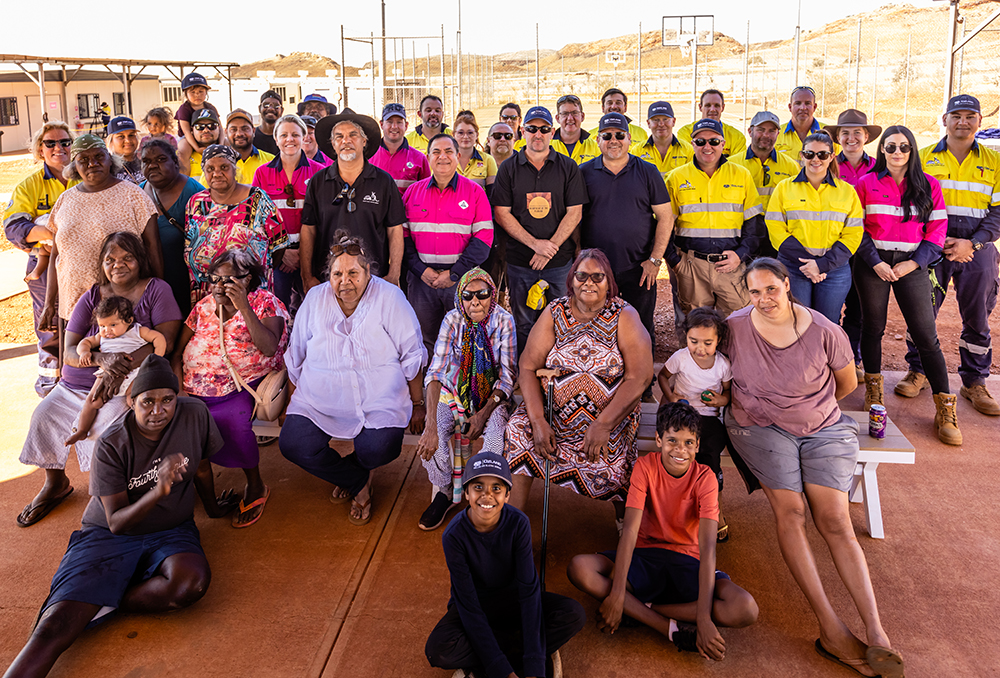
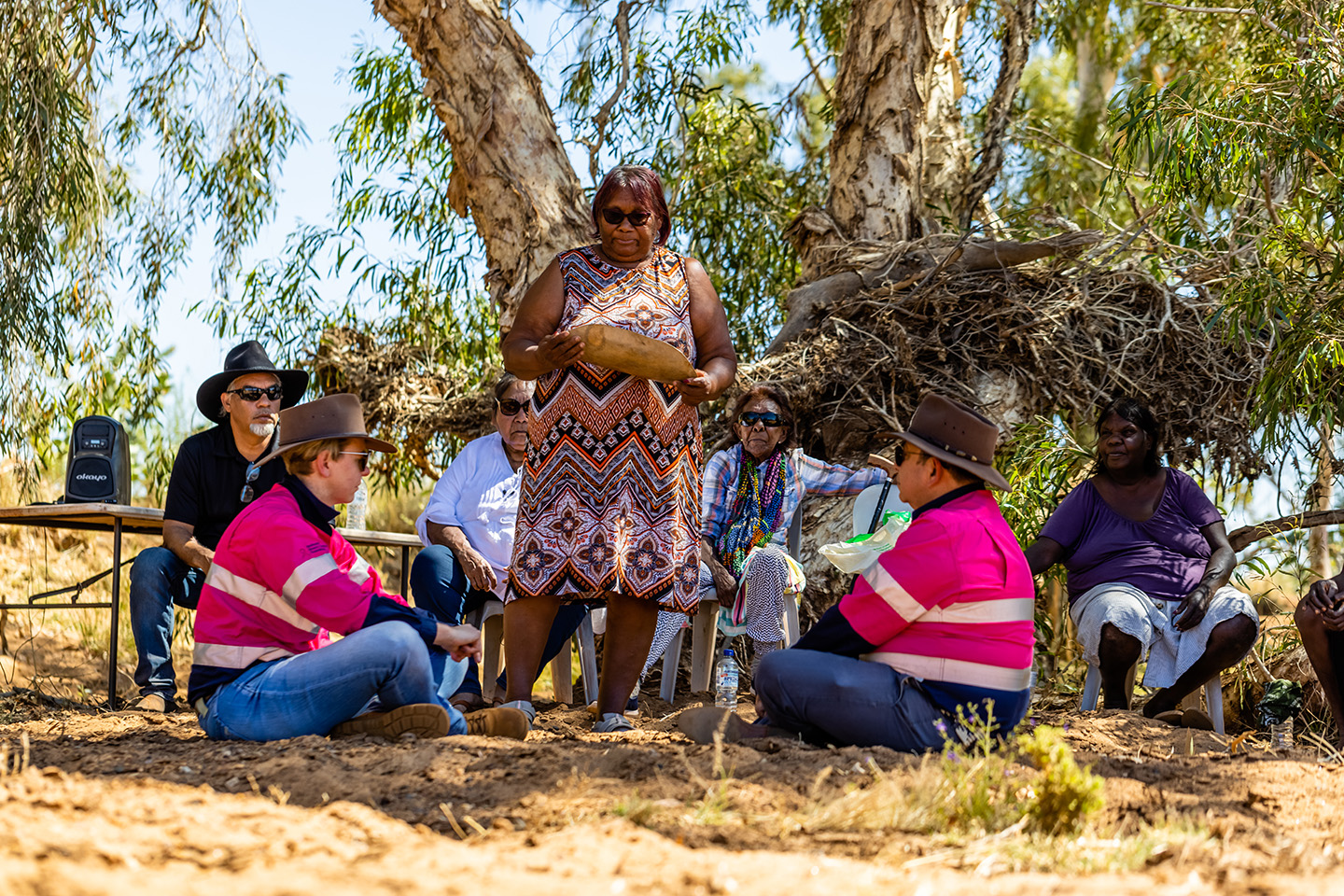
Hancock has had long term engagement with Traditional Owners. In the 1990’s our Executive Chairman Mrs Gina Rinehart gave a significant land area which was part of Mulga Downs Station to the local community at the request of a senior Elder so that he could provide cultural learnings to younger Indigenous people. The gift of this land was not required under any legislation or regulation and demonstrates leadership and goodwill in relationships with local aboriginal communities dating back 30 years.
This history has been built upon and expanded by providing pathways for Traditional Owner employment and support for Indigenous businesses.
Hancock Prospecting is also committed to ensuring development of Indigenous businesses and Indigenous employment opportunities in the wider economy. This is demonstrated not only across our companies, but through our encouragement of supplier partners, contractors and our Foundation and philanthropy partners to support and grow Indigenous businesses. Hancock is implementing this model as widely as we can through our supply chain.
The foundation of our Indigenous partnerships is a connection to the communities in which we operate, and have operated throughout our history. In 2022 Hancock launched the Hanrine Futures Indigenous Scholarship Program, with ten students awarded scholarships in the first intake. The scholarships provide education, work experience and training to young people from Traditional Owner groups that begins when the students enter the program and continues through to employment. The program is run in partnership with Indigenous education not-for-profit, Madalah.
The Hanrine Foundation, funded by Hancock and other like-minded companies, provides a host of innovative programs across the Pilbara. The Pilbara Faces Program is one such example, where a partnership with the Perth Children’s Hospital Foundation and direct funding supported the development of facial recognition technology that is helping identify rare diseases in Indigenous children in the Pilbara.
At Hancock, we consider the Pilbara our home, we have been there longer than any other iron ore miner and have an understanding of working with Traditional Owners that can only be gained from a shared history over many decades. We’re proud of the work we do and are committed to our actions reflecting the community values in which we operate and support.
For more information related to Hancock Prospecting Indigenous Engagement in mining through our operating businesses please visit:
Roy Hill
www.royhill.com.au/community
Atlas Iron
www.atlasiron.com.au/our-responsibility/traditional-owners-heritage
MINING ESSENTIAL TO ACHIEVE NET ZERO
Mining is critical to securing the minerals essential for everyday life and essential to be able to build renewable energy projects.
The mining industry produces the primary products required for the generation, distribution and delivery of renewable energy. The first step in the supply chain to create solar panels and wind turbines and EV batteries begins with mining companies like Hancock, Atlas and Roy Hill.
Hancock Prospecting believes it is important to follow the science. We are 100% compliant with all legislation and regulations established by the government targeting a reduction of emissions by 43% below 2005 levels by 2030 and net zero by 2050. This includes plans required by regulators to reduce emissions from our mining operations over time which are consistent with the broader government targets.
Roy Hill was the first mining company in the Pilbara to place an order for battery powered locomotives. Hancock needs locomotives to carry the iron ore from our inland mines to the port in Port of Hedland to export and contribute to the $150 billion of annual iron ore export revenue generated by miners in Australia. The first battery locomotive will be delivered in 2023.
We have also partnered with our truck manufacturers to investigate electrification of our haul fleet to replace diesel. The haul fleet represents the largest component of emissions in the mining process.
As a significant member of Australia’s mining industry, Hancock, alongside other miners, comply with rigorous multi-layered regulations in order to develop new projects or maintain operations.
Part of these efforts are that miners are required to consult and reach agreement with the Traditional Owners of the lands on which we operate – without agreement with Traditional Owners projects can’t proceed.
The regulatory framework also encompasses the management of the environment (including flora, fauna, water, land rehabilitation, and carbon emissions), native title, and cultural heritage engagement.
This is part of our landscape and we take our responsibilities in meeting our obligations seriously. Hancock has been a responsible mining company for decades and complies fully with all its obligations.
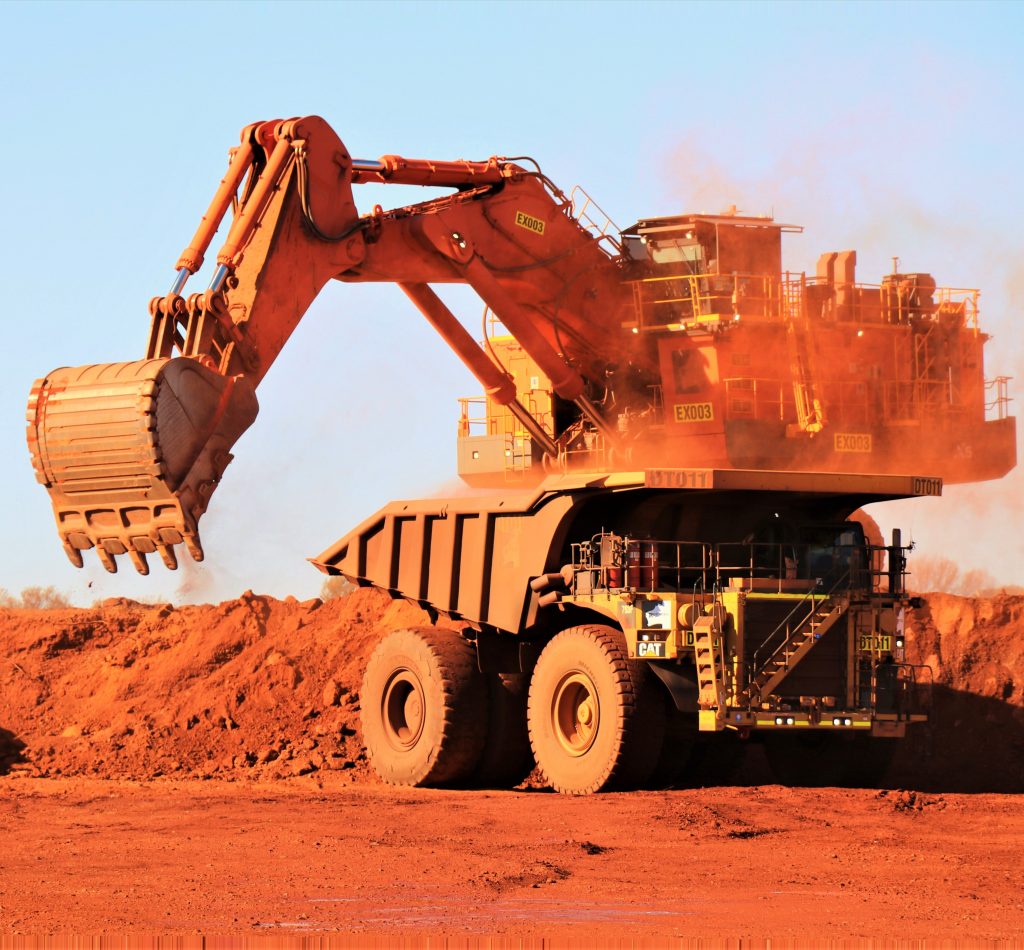
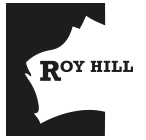
ROY HILL
Roy Hill is Hancock Prospecting’s majority-owned US$10 billion mega iron ore operation, which has successfully ramped up production to become Australia’s single largest iron ore mine producing 60 million tonnes of ore per annum.
The Roy Hill story is an incredible one, dating back many years. Gina Rinehart acquired the Roy Hill tenements in the early 1990s after her father’s passing and after BHP Billiton dropped them. Notably, all professional advice at the time insisted that the tenements were of little value, urging Gina Rinehart to abandon the project.
To her credit, she forged ahead with her dream to build, own and operate a first-class major iron ore mine in one of the world’s premier iron ore provinces, the Pilbara, creating jobs both directly and indirectly for thousands of people.
With its own integrated high-grade iron ore mine, 344km heavy haul railway system and purpose built port facilities, this project has marked a number of impressive firsts such as launching Australia’s first and only fleets of pink mining trucks and trains dedicated to breast cancer and its sufferers, and has achieved a female participation rate above the industry standard.
Roy Hill also marked the largest ever-commercial deal between Australia and South Korea entered into in history. Roy Hill had to achieve over 4000 government approvals, permits and licenses prior to construction with all of the associated costs, delays and risks. Roy Hill secured the world’s largest debt funding package for a mainly Greenfields, land-based mining project, from nineteen of the largest banks in the world and five Export Credit Agencies, gaining international acclaim.
Remarkably, over 50,000 people in the Australasia region have been directly and indirectly employed thanks to this mega project. Some of these operate some of the largest equipment in the worlds mining industry, another first.
Roy Hill celebrated its first shipment of iron ore from Port Hedland on 10 December 2015 and has since loaded tens of millions of tonnes of shipments to key markets in Japan, Korea, China and Taiwan.
This flagship project is majority owned by Hancock Prospecting (70 per cent) with minority partners Marubeni Corporation (15 per cent), POSCO (12.5 per cent) and China Steel Corporation (2.5 per cent).
Roy Hill is headquartered at its state-of-the-art Remote Operations Centre (ROC) adjacent to Perth International Airport.
Finally, Roy Hill is without a doubt an iron ore industry leader and trailblazer, having been presented with numerous industry awards including:
- 2024 | Excellence in Mine Safety (Safer Summer Campaign) – Australian Mining Prospect Awards
- 2024 | Australian Mine of the Year – Australian Mining Prospect Awards
- 2024 | AI Innovation Award (RoyBot) – Australian Business Awards
- 2024 | Australian Defence Force Reserves Employer Support Award
- 2023 | Western Australian of the Year – Mrs Gina Rinehart AO
- 2023 | Australian Mine of the Year
- 2022 | Australian Mining Prospect Awards – Mine Project Success of The Year
- 2022 | AIM WA Pinnacle Awards WA Business Leader of the Year 2022 – Mrs Gina Rinehart AO
- 2021 | Australian Mining Prospect Awards Lifetime Achievement Award – Mrs Gina Rinehart AO
- 2021 | Australian Mining Prospect Awards Australian Mine Of The Year
- 2021 | Australian Mining Prospect Awards Hard Rock Mine of the Year
- 2020 | CEO Magazine: Chief Operating Officer of the Year Award – Gerhard Veldsman
- 2020 | Australia’s Mining Monthly Awards Community Project of Year
- 2020 | Australian Mining Prospect Awards Mineral Processing of the Year (Roy Hill – WHIMS)
- 2020 | Industry Leadership Award for Raw Materials and Mining at the prestigious S&P Platts Global Metals Awards
- 2019 | Diggers & Dealers Digger of the Year Award
- 2018 | WA Training Awards WA Employer of the Year
- 2018 | DMIRS Safety and Health Resources Sector Engineering Award
- 2018 | Australian Mining Prospect Award for Community Interaction
- 2018 | L&MH Mercury Awards Transport Solution of the Year: Rail
- 2017 | SMART Award for Excellence in Supply Chain Management & Distribution
- 2017 | Golden Gecko Certificate of Merit
- 2017 | Platts Global Metals Awards Rising Star Company Award
- 2016 | Australian Mining Prospect Awards Excellence in Environmental Management Award
- 2016 | Engineers Australia (WA) Australian Engineering Excellence – Engineering Distinction Award
- 2016 | Engineers Australia (WA) Australian Engineering Excellence Award – Resource Development
- 2016 | Engineers Australia (WA) Australian Engineering Excellence Award – Project Management
- 2016 | Association of Mining and Exploration Companies Environment Award
- 2016 | Project Management Institute Project of the Year
- 2016 | Railway Technical Society of Australasia Railway Project Award
- 2016 | Golden Gecko Certificate of Merit
- 2015 | Mines & Money Asian Corporate Development Award
- 2015 | IJ Global Asia-Pacific Project Mining & Metals Deal of the Year
- 2015 | IJ Global Asia Pacific Deal of the Year
- 2014 | FinanceAsia Magazine Project Finance Deal of the Year Award
- 2014 | Finance International Magazine Asia Pacific Deal of the Year
- 2012 | Diggers and Dealers Deal of the Year Award
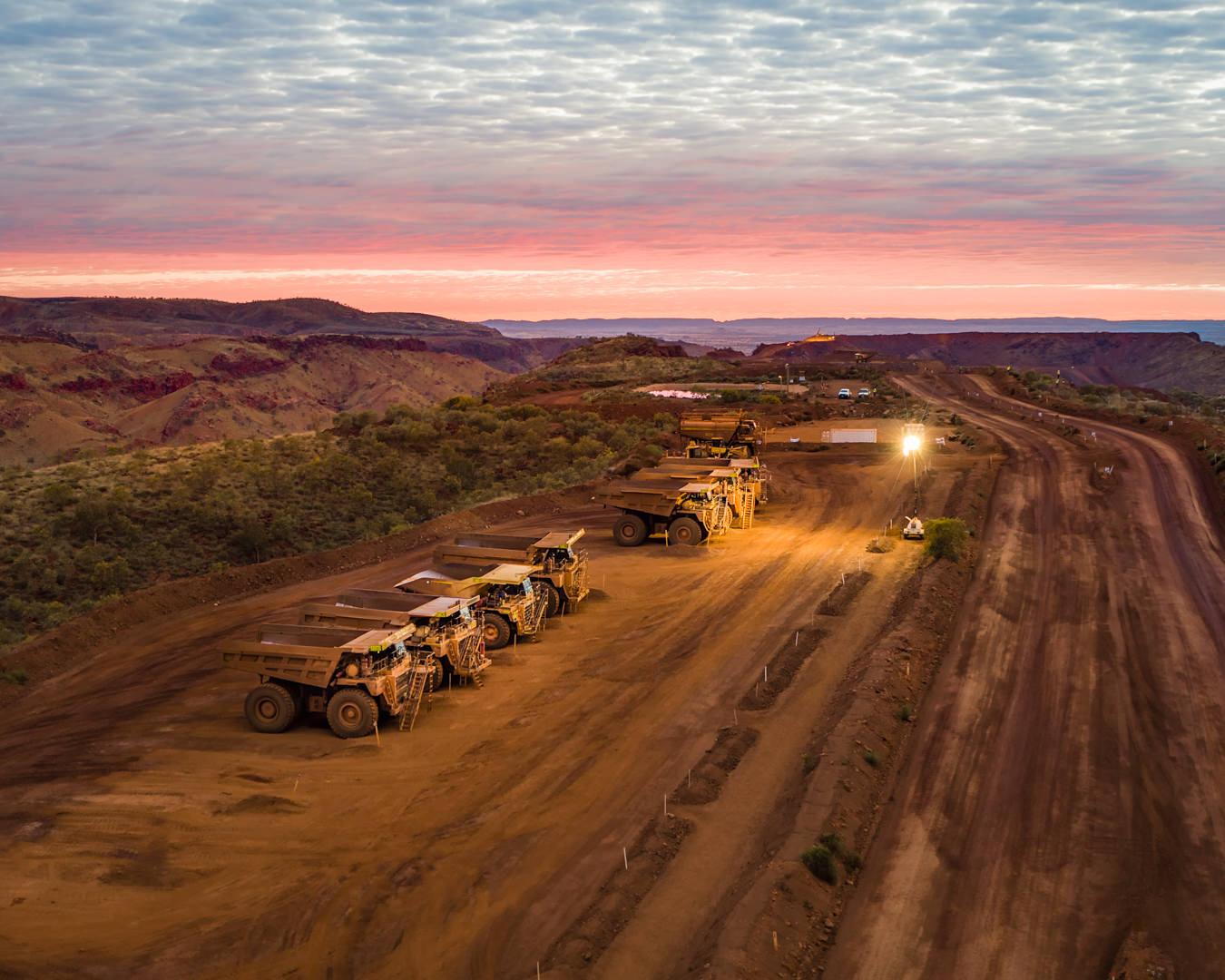
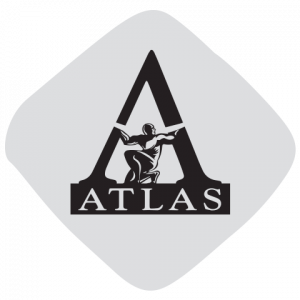
Atlas Iron
Atlas is a dynamic Australian company, mining and exporting direct-shipped iron ore from its Mt Webber, Sanjiv Ridge (named after Atlas CEO Sanjiv Manchanda) and Miralga mines in the northern Pilbara region of West Australia. It has an ambitious portfolio of growth, exploration and development projects which now includes two magnetite projects.
Atlas was first listed as a public company in 2004 but has truly accelerated since being acquired by the Hancock Prospecting in 2018.
Atlas has an agile and responsive operating model, focused on smaller deposits. These deposits, developed by Atlas, are often overlooked by major iron ore producers due to their small annual production capacity and short mine life.
Atlas engages contractors to provide mining, processing and haulage services – often privately-owned family businesses or smaller listed companies as well as Indigenous companies. At Atlas Iron’s Miralga mine, East West Pilbara, a Traditional Owner business, was successfully awarded a mining contract, as part of a joint venture with Ozland, to provide a range of mining services on their own lands. This is understood to be a first in the Pilbara.
Atlas is a user of the multi-user Utah Point Port Facility and, since commissioning, has delivered the single largest share of Utah Point throughput, shipping over 113-million tonnes over 10 years. Approximately 800 people are employed directly attributable to operations, with additional indirect jobs in excess of 3,000 in the Port Hedland region.
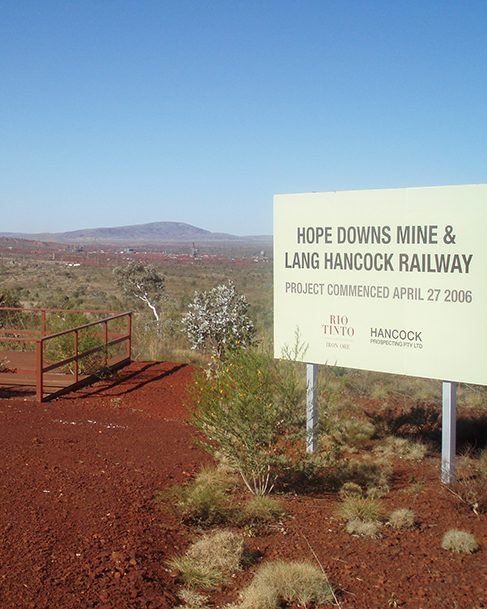
HOPE DOWNS
Hope Downs iron ore (HDIO), a subsidiary of HPPL and part of the Hancock Prospecting, secured a State Agreement for the Hope Downs temporary tenements in December 1992, (nine months after the passing of Hancock Prospecting founder, Lang Hancock). Based on that more secure title, Hancock was able to progress exploration and evaluation work, then finished a pre-feasibility study and commenced a Bankable Feasibility Study under the executive chairmanship of Gina Rinehart. In 1998, after a worldwide search, HDIO secured Iscor of South Africa as a partner to help fund the completion of the Hope Downs Bankable Feasibility Study, given that HPPL then had inadequate money to timely finalise an expensive bankable feasibility study.
Iscor later “unbundled” and the partner became Kumba, a smaller and less financially strong company, which was later taken over by Anglo. Anglo had committed to different development priorities during its approval for takeover process. The Hope Downs project was delayed by various events, including inter alia, negotiations to share infrastructure with BHP Billiton iron ore (BHPBIO), settlement of the Porteous litigation (litigation that involved financial claims for Hope Downs, which needed resolution prior to finance being achievable), the hostile takeover of Kumba by Anglo, and Anglo’s commitment to the South African Government that it would focus its iron ore investments in South Africa.
This caused a problem for the Hope Downs project, including its title continuing, as the state agreement included that the Hope Downs project must submit a timely financeable development proposal or be in breach of the state agreement and subject to default and loss.
After a successful arbitration, and government imposed difficulties with accessing Port Hedland (the then selected port for Hope Downs), on 1 July 2005 Kumba /Anglo was replaced by Rio Tinto Iron Ore when the company announced an agreement to enter into the Hope Downs Joint Venture (HDJV), a 50 / 50 joint venture between Hope Downs Iron Ore (HDIO) and Rio Tinto iron ore. The involvement of another partner involved a further selection process and much work, including a major rewrite of the draft development proposal, against the difficult time pressure imposed under the State agreement, should a financeable development proposal not be submitted on or by June 30th.
First production from the A$1.3 billion Hope Downs first Mine was achieved in November 2007 with first railing of ore over the new “Lang Hancock Railway” (named in honour of Lang Hancock) to Dampier achieved prior to Christmas 2007.
Following the success of this first mine, further investment enabled the commencement one year later of its second major mine, Hope South, which increased production capacity to approximately 30 Million Tonnes Per Annum (Mtpa). Hope Downs North and Hope Downs South are both primarily Marra Mamba deposits and are distinct deposits that form part of Hope 1.
Following the achievements at both Hope 1 North and South, Hope Downs 4 (which had had a successful pre-feasibility study undertaken by Hancock prior to Rio Tinto Iron Ore’s involvement) was subsequently developed and commenced production in 2013. Hope 4 is a Brockman hosted iron ore deposit located approximately 30km north of Newman, with a reserve of 162Mt as at 2016, and currently provides production tonnage of approximately 15Mtpa.
Today, Hope Downs comprises three successful major open pit mines (Hope 1 North, Hope 1 South and Hope 4) producing high-grade lump and fines products.
A fourth mine, Baby Hope became active in October of 2018.
The project has a workforce across a range of cultures and operates with an excellent record in the areas of health and safety. Maintaining these high standards and reliability for its customers are key areas of management focus.
Hope Downs currently has total production capacity of approximately 47Mtpa and represents one of Australia’s largest and most successful iron ore projects in the lower cost quartile.
The risks that needed to be overcome – the efforts, focus, hard work, persistence and investment by HPPL and its subsidiary over many years – plus the additional risks, endeavours and expense to achieve the myriad of thousands of government approvals, permits and licences, plus the many years of defending and paying for Porteous litigation so financing for Hope Downs was possible – built a foundation for such successful projects and should enable the Hancock Prospecting to continue to contribute to the growth of the Pilbara region, West Australia and the nation for decades to come.
Hope Downs was named in honour of Hope Hancock (née Nicholas).
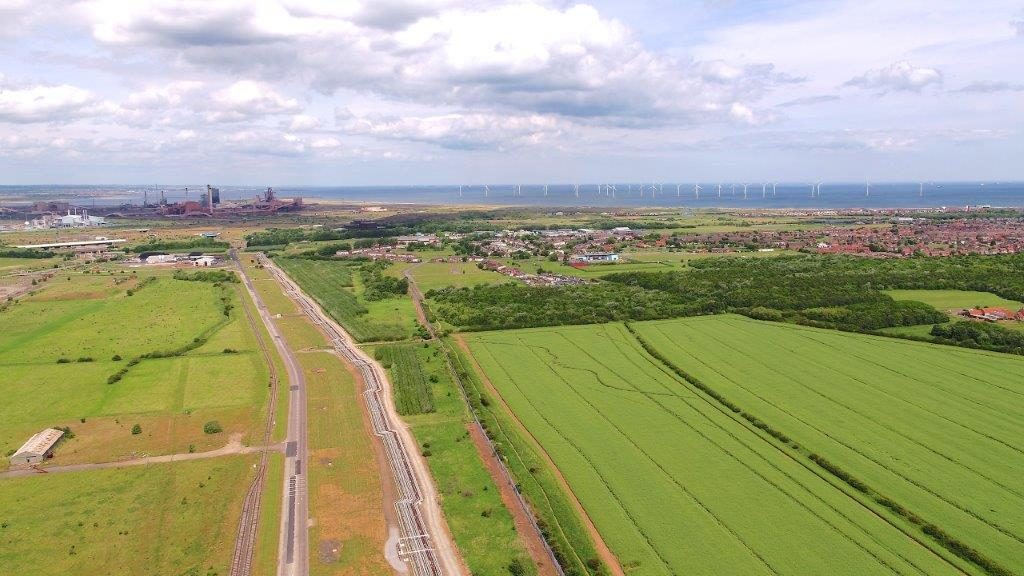
SIRIUS MINERALS
In 2016, Hancock Prospecting committed to making its first major overseas investment in British mining business Sirius Minerals.
Sirius Minerals is developing the world’s largest deposit of polyhalite, a rare mineral containing four (potassium, sulphur, magnesium and calcium) of the six macro-nutrients used in multi-nutrient plant fertilizers.
Located in North Yorkshire, United Kingdom, this project will involve constructing a new mine, building a 37km underground conveyor system, developing a state-of-the-art granulation facility and upgrading port facilities. Its initial production capacity is 10 million tonnes per annum (Mtpa), with the potential to reach 20Mtpa through subsequent phases of development.
This project will deliver a new and natural product which fits with Hancock’s long-term investment in agriculture and will provide a product of value to many Australian farmers. Some of its produce will also be available for Hancock’s agricultural interests.
This project is now being developed by Anglo American, following our initial investment which secures long-term benefits for decades to come.
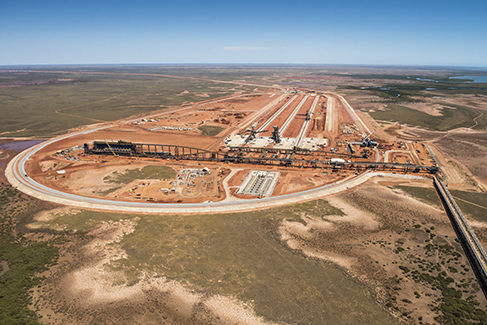
EXPLORATION PROJECTS
Pilbara Iron Ore Exploration
Hancock Prospecting continues to explore for iron ore deposits and grow its mineral resource inventory though a number of exploration tenements in the Pilbara.
These tenements cover large areas of highly prospective geological formations including the Marra Mamba Iron Formation which hosts the low phosphorous iron ore also found at Roy Hill.
Hancock Prospecting has a dedicated exploration team focused on the exploration of its iron ore deposits in the Pilbara.
Four Eagles Gold (Joint Venture)
The Four Eagles Project is a Joint Venture partnership between a subsidiary of Hancock Prospecting, Gold Exploration Victoria and Catalyst Metals.
Together with its Joint Venture partner, Hancock Prospecting is actively exploring for high-grade gold deposits within a world-class gold province in Victoria, Australia.
Queensland Coal Investments (QCI)
QCI is a wholly owned subsidiary of Hancock Prospecting and is currently focused on coal exploration in Queensland.
Minerals Australia
Minerals Australia is a wholly owned subsidiary of Hancock Prospecting and is focused on active exploration for copper and gold in NSW as well as oil and gas exploration in the highly prospective Beetaloo Basin, Northern Territory.
Sellheim Project
The Sellheim Project is a Joint Venture between a subsidiary of Hancock and local explorers. Located in North Queensland, the Project is an early stage exploration project targeting gold and copper mineral targets.


